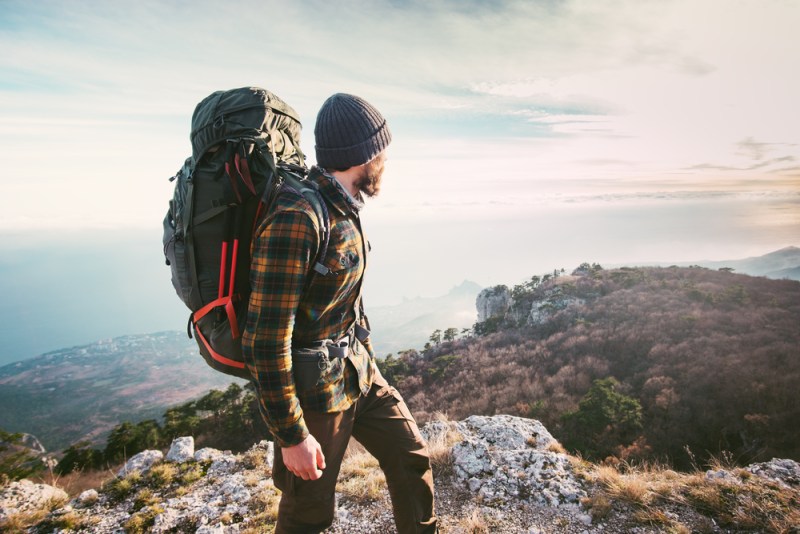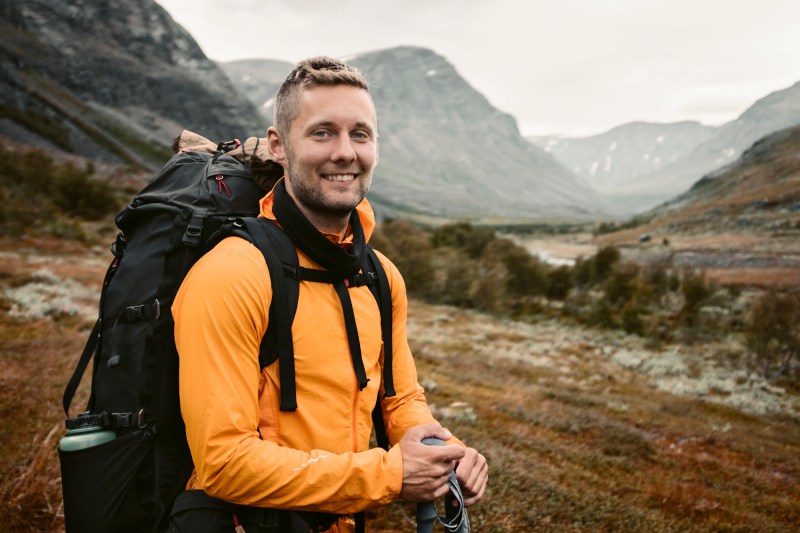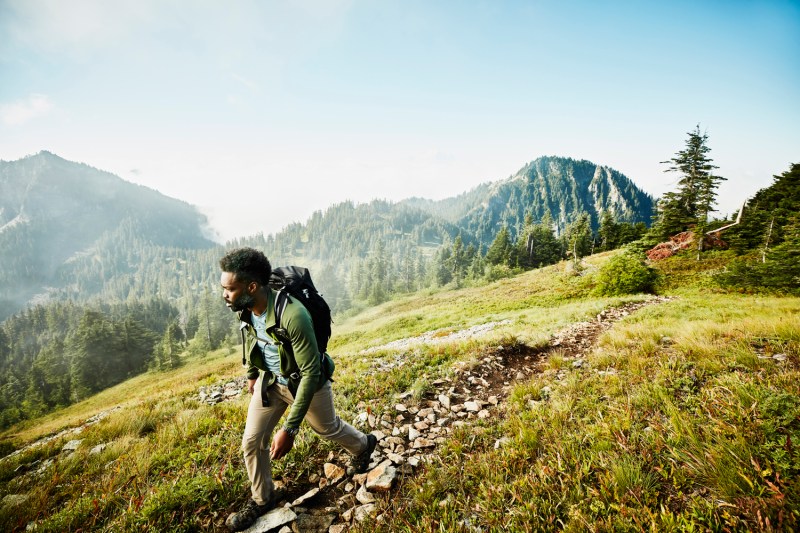
Solo hiking is a great way to challenge yourself and enjoy nature. While it can be a thrilling and rewarding experience, let’s not forget that solo hiking also comes with its own set of challenges and risks.
If you’re planning a hiking trip, especially if you’re going alone, it’s crucial to prioritize safety because you likely won’t have a helping hand unless the trail you choose is well-traveled. The last thing you want is to be stranded out in the wilderness with a twisted ankle and no bear spray.
But no worries — we’ve got you covered with some helpful tips on how to plan and stay safe on your solo hiking trip.

Prepare before you go
Planning for a solo hiking trip requires careful thought. Not only should you be familiar with the trail, but you should also think about any potential accidents that might happen along the way. Before heading out, make sure to prepare yourself physically and mentally. That way, you’ll be able to combat anything that might pop up along the way. Let’s look at some helpful tips for planning your solo hike.
Share your itinerary
If something happens along the trail, no one’s going to know where to look for you if you don’t tell someone. Let someone know where you’re going and when you expect to return. This could be a friend or family member, or you can leave your itinerary at a ranger station or with a hiking club. Make sure to include your planned route, expected start and end times, and any contingency plans in case of an emergency. If something happens, it could save your life.
Check the weather
Don’t be caught off guard by Mother Nature’s mood swings! Check the weather forecast before you hit the trail, and pack gear suitable for whatever she throws your way. Especially if you’re hiking alone, consider packing appropriate gear for rain, wind, and temperature changes, even if it’s not on the forecast.
Be aware of local plants and animals
When it comes to hiking alone, knowledge is power. Take some time to research the area you’ll be
Train before you hike
Solo hiking can be physically demanding, especially if you’re tackling a challenging trail. If you fall and hurt yourself, you might be hard-pressed to get out of that pickle without a helping hand. Make sure you’re in good physical shape before you go, and if you’re not there yet, gradually build up your endurance and strength so you’re easily able to handle the difficulty of your trail.
Invest in quality gear
Quality hiking gear is essential for any hiking trip, but it’s even more important when you’re
No matter how short your hike is, bring a first-aid kit that hasn’t expired. These items can help ensure a comfortable and safe hiking experience when unexpected challenges arise. Remember, prevention is always better than the cure, so don’t skimp on this step.

Staying safe on the trail
By being proactive about your safety, you can enjoy the many rewards of solo hiking while staying out of harm’s way. There’s still plenty that you can do to reduce the risks of
Don’t stray from trail markings
Plan your route and stick to marked trails, especially if you’re hiking alone. While it may be tempting to go off and freely explore the great outdoors, turning off-trail can increase the risk of getting lost or injured. This will make it far more difficult to find you if you’re in trouble, and it can also disrupt the natural balance of the environment.
Bring a map or GPS
Knowing where you are is one of the best ways to stay safe on the trail. Make sure you have a detailed map or a GPS device, and know how to use it. Bring extra batteries or a portable charger for your GPS device, and familiarize yourself with the terrain before you go. On the trail, note and follow any landmarks.
Avoid hiking at night
Hiking at night can be hazardous due to low visibility and an increased risk of injuries. Therefore, it’s best to avoid
Bring a whistle
Bring a whistle or other signaling device that can help you get the attention of other hikers or rescuers in the event of an emergency. Make sure you know how to use it, and keep it easily accessible, such as putting it around your neck or tucking it into a jacket pocket.
Wear bright colors
Wearing bright colors can also help you stay visible on the trail, especially if you need to signal for help. Avoid wearing camouflaged or dark clothing, which can make it harder for rescuers to find you. Instead, choose clothing that stands out, such as neon or fluorescent colors. If you have clothing with reflective neon strips, wear it! This will make you visible from a greater distance.
Final takeaways
Solo hiking can be a rewarding and exhilarating experience, but it’s important to take the necessary precautions to stay safe. By preparing before you go, staying aware of potential hazards, and taking steps to stay safe on the trail, you can enjoy a successful and memorable solo




